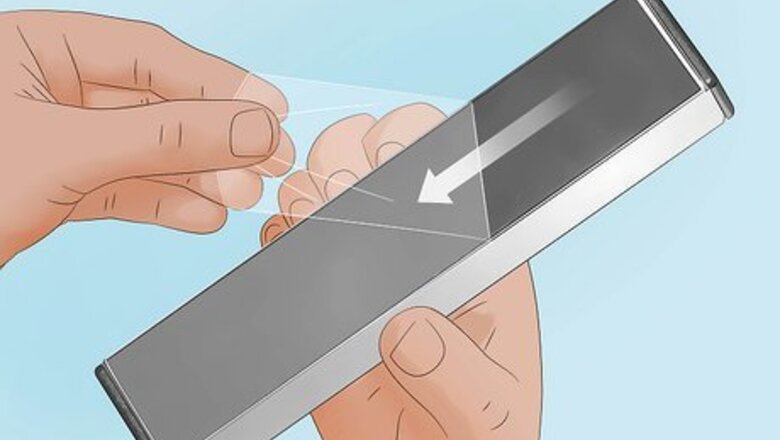
views
- Peel away the protective strip from the adhesive of a floor gap fixer tool, which is a handle with an adhesive pad suction cups used to shift floorboards.
- Place the fixer adhesive-side down on a plank 1 inch (2.5 cm) from the gap, making sure it’s firmly in place.
- Use a mallet to firmly strike the end of the gap fixer tool, shifting the plank away from the nearest wall and closing the gap.
Using a Gap Fixer to Close End Gaps
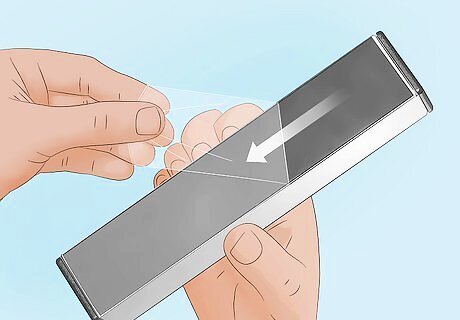
Remove the protective strip from the adhesive face of a gap fixer. Peel the plastic covering away from the adhesive of the gap fixer to expose the tacky surface underneath. This surface will be used to grip the laminate plank while you force it back into place manually. If you don’t have a gap fixer, make one by adhering a length of heavy-duty double-sided tape to the underside of a 6–12 in (15–30 cm) 2x4 or other wood block, following the length of the block. Alternatively, if your gap fixer uses suction cups, position the fixer appropriately, then press down on the tabs on either side to secure it to the plank. Also, vacuum up any debris in the gap to make sure it's free from obstruction, which might make it more difficult to close the gap.
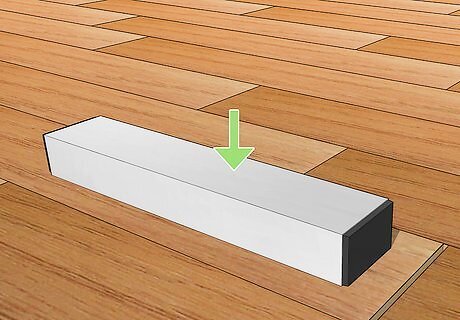
Position the block 1 in (2.5 cm) from the end of one of the displaced planks. Select the plank on the side of the gap nearer to the wall. Situate the gap fixer so that it’s centered along the width of the plank. Then, press down firmly on the top side with both hands to anchor it so that it sticks to the plank securely enough to prevent slipping or scooting while you work. Avoid removing the block once it’s in place unless it’s absolutely necessary or until you’ve finished, as this may weaken the hold of the adhesive pad.
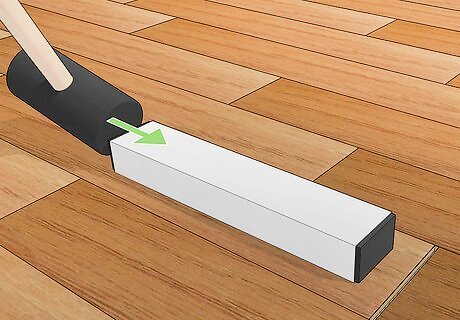
Tap the end of the block away from the wall with a mallet to close the gap. Steady the gap fixer with one hand and give the side furthest from the gap a couple whacks to move the loose plank closer to the one it’s drifted away from. It will slide along a few millimeters at a time. Continue tapping the block until the plank rests snugly against its neighbor. When using the floor gap fixer, it’s generally best to inch the problem plank towards the center of the floor, rather than outward toward the wall to ensure that the far end remains concealed by the baseboard. Be careful not to strike the block too forcefully. This could dislodge it, or even damage the underside of the flooring. Use firm but controlled strikes. After successfully closing the gap, simply pull up the floor gap fixer to remove it. Rock it gently from side to side if it proves difficult to dislodge.
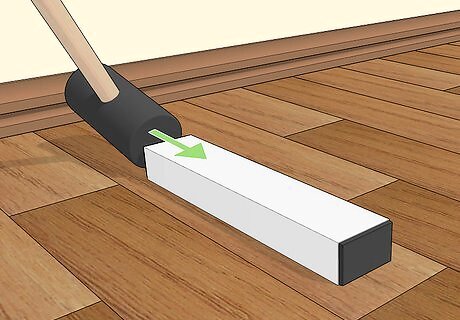
Use the gap fixer to close subsequent gaps until you reach the wall. After you’ve closed 1 gap, another will open at the other end of the plank. Use the block and mallet to shift the planks toward the center of the floor until you reach the baseboard. Once you reach the baseboard, you may not have room to strike the gap fixer, so position a small pry bar at the end of the gap fixer, then strike the protruding end of the bar to move the board away from the wall. If necessary, wipe off any dust or debris that’s accumulated on the adhesive pad with a damp cloth before the next time you use it. Or, add a new layer of double-sided tape to your DIY gap fixer to give it a clean adhesive surface. You’ll end with a small gap in the laminate planks near the wall. This is a natural gap meant to let the floor expand with the weather, but if you like, conceal it with some floor trim.
Filling End Gaps with Wood Glue

Coat the bottom of the gap and edges of the planks with wood glue. Use a toothpick or a cotton swab to cover the bottom of the gap with wood glue. Then apply a thick coating of glue to the squared edge of the plank within the gap, or the “tooth” where the planks join, aiming for even coverage from one end to the other. Don’t be afraid to use more than you need—you’ll wipe the excess away in a bit. Do your best to work neatly and efficiently, but don’t take too much time. Wood glue dries quickly, and once it does, it will be tough to get a second shot. Any clear or yellow wood glue will work just fine. Invest in a high-strength adhesive to spare yourself follow up repairs in the future. Alternatively, use laminate gap filler or wood putty to fill in gaps in laminate flooring.
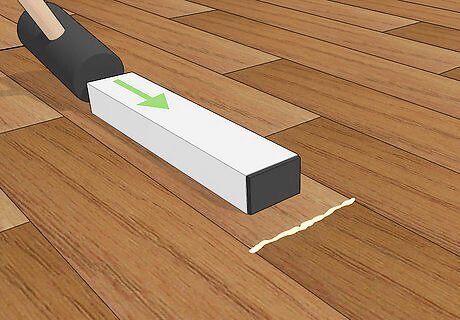
Push the separated planks together to close the gap. To do this, use a gap fixer or strike the plank at an angle repeatedly with the palm of your hand. Or, wearing rubber-soled shoes, simply kick down on the plank in the direction of the gap, which may be enough to shift it.
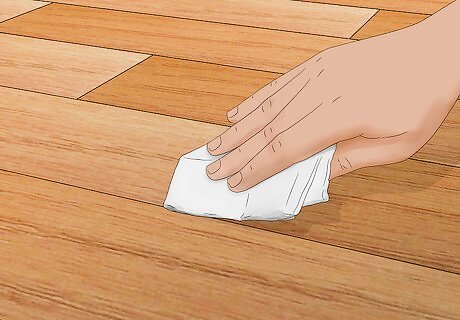
Wipe away the excess glue with a damp rag. Wet a rag with warm water and use it to blot at the glue squeezing up through the cracks in the newly-repaired gap, wiping over the seam until no residue remains. Allow the wood glue to dry for about an hour. Note that any adhesive left behind by mistake could dry to a rough texture underfoot or produce mild discoloration in the laminate. If you used wood putty to fill the gap, you may need to sand down the excess material once it has had time to dry. For the smoothest finish, use 180-grit sandpaper or higher. Most wood glues dry clear, which means they won’t be visible in the seam between the two planks.
Closing Lengthwise Gaps
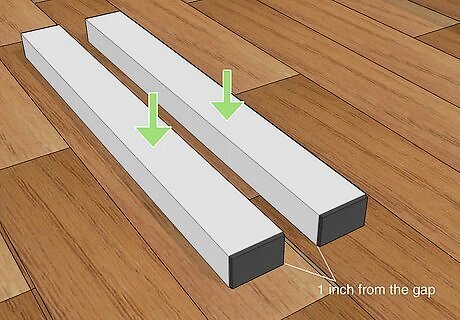
Position parallel gap fixers on either side of the gap. Peel off the protective strip on the adhesive of the gap fixers. Then, place them on the planks on either side of the gap, about 1 in (2.5 cm) from the gap itself. Or, adhere durable double-sided tape to the underside of 2 blocks of wood that are about as long as the planks themselves, then position the blocks in the same way—parallel and on either side of the gap. For best results, use 2 pairs of gap fixers, each pair positioned on either end of the gap. Note that lengthwise gaps in laminate flooring may be caused by warped planks or an uneven subfloor, in which case you may need to replace the boards or in some cases even replace the entire floor. Hold a straightedge along the length of a problem plank to make sure the edges are straight and haven’t warped. If the plank groans or clicks when you walk on it, the subfloor isn’t level.

Position 2 bar clamps to the edges of the gap fixers, spanning the gap. Open your 24 in (61 cm) bar clamps and place them face-down so that they run across the gaps and the grips rest on the far edges of the gap fixers. Place 1 clamp across each pair of gap fixers, or on opposite ends of the wooden blocks, so that the tension is even along the gap. Your clamps are now ready to push the laminate planks together, closing the gap.
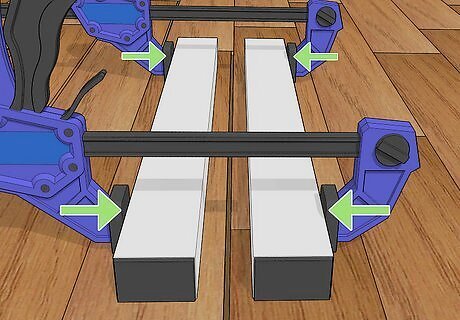
Gradually tighten the bar clamps to close the gap. Twist the screws of the clamps or squeeze their triggers to tighten them. Tighten them only until you feel moderate resistance, then leave them be for about an hour, allowing the boards to gradually shift. Be sure to adjust both clamps evenly, so that the gap closes evenly. Continue to tighten the clamps and let them rest until the gap is closed. Avoid forcing the planks together in one go, which may dislodge the gap fixers or even warp the planks themselves.
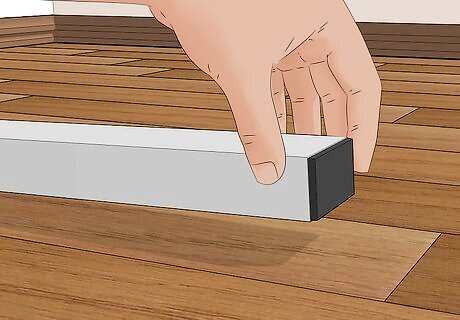
Remove the gap fixers and repeat the process for any remaining gaps. Remove the bar clamps and gently rock the gap fixers or adhesive boards from side to side to loosen and remove those, as well. Then, wipe down the adhesive on the gap fixer with a damp rag to clean it, and place the fixers and clamps in the same fashion as before, on either side of any other gaps, to seal the floor. Work to pull the planks toward the center of the floor, repeating the process until you reach the nearest wall. This results in an intentional gap at the edge of the flooring that allows your floor to expand naturally without buckling. As you work on subsequent gaps, stand on or place a heavy object (like 4-5 bricks) on the plank adjacent to the gap that’s nearer to the center of the floor, keeping it stationary and pulling the other plank toward it rather than pulling both planks together, which may result in unintentional gaps.
Preventing Gaps in Laminate Flooring
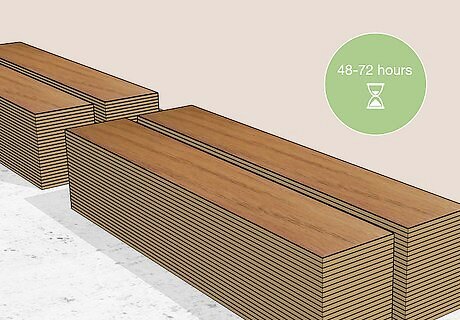
Allow your laminate flooring to acclimate for 48-72 hours. Before installation, bring the planks inside and leave them to sit undisturbed. This gives the material a chance to expand or contract according to the conditions inside, preventing dramatic warping once the flooring is installed. Fluctuations in temperature and humidity can cause certain types of laminate flooring to swell and shrink slightly. Over time, this can result in noticeable gaps and other inconsistencies. Storing your laminate flooring materials in your garage, basement, or foyer also keeps them from being exposed to the elements.

Make sure the subflooring is perfectly level. Use a level to check the angle of your subfloor every 2–3 feet (0.61–0.91 m). If there are rises or depressions present, your laminate planks won’t sit correctly, no matter how many times you reposition them. Spread leveling compound over any humps or divots using a [concrete squeegee] to smooth out uneven concrete subfloors before you install laminate flooring. If you plan on adding a separate underlayment for insulation, make sure it’s cut to the size of the floor and laid with minimal overlap to eliminate wrinkling, folding, or bunching, all of which could contribute to an off-level subfloor.
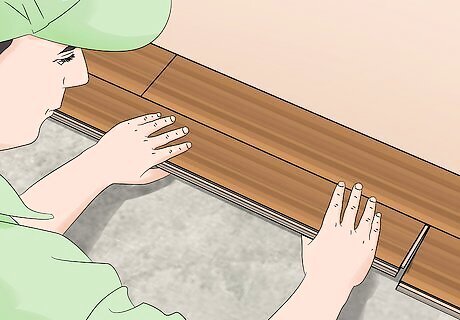
Call a professional to install your laminate flooring correctly. Attempting to measure, cut, and install laminate flooring yourself leaves a lot of room for error, even if you have experience with this type of project. In many cases, it’s better to leave it to the pros. They have the equipment, expertise, and manpower needed to get the job done faster and with more lasting results. Hiring a flooring specialist to work on your home involves a certain amount of trust. Go online to read reviews of contractors in your area or ask a friend or loved one for a personal recommendation to find one that meets your standards.




















Comments
0 comment